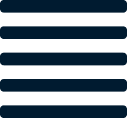When we first started Fuse, we had several key hypotheses as to how we could improve the way inventory planning is done by retailers today. First, we were convinced that it’s impossible to plan a growing business in Excel. As the volume of data and the number of SKUs grow, it’s easy to make errors in Excel and, in fact, impossible not to when you’ve linked several spreadsheets and Excel is crashing mid-save. Excel’s capabilities are limited, and thus planners must rely on backward-looking metrics like sell-thru and historical growth rates, which don’t accurately paint a picture of their growing business. Second, an algorithm can better detect anomalies and accurately estimate seasonality than a human whose attention is divided amongst the many other urgent priorities of the day.
After working with our early customers for some time, we’re proud to say that both our hypotheses were correct -- we’ve found that the ROI of using Fuse makes a meaningful, material difference on both the revenue and the cost side.
10% More Revenue
On the revenue side, we’ve found that Fuse helps our customers achieve 10% more revenue. We did a deep dive into our customers’ biggest quarter - Q4. First, we took a look at stockouts in Q4. We defined a stockout as zero sales with 95% confidence. This means that we excluded instances in which zero sales could have legitimately meant no demand for the product. Second, we assumed that our customer’s revenue target for Q4 was equal to actual Q4 sales. In reality, given the number of stock-outs our customers experienced (more on that below), the revenue target was likely most definitely higher than the sales figures actually achieved. Finally, at Fuse, we always encourage our customers to modify the forecast by including relevant details like product launch dates, products that are phasing out, as well as other information they might know about their business that an algorithm doesn’t. For purposes of our analysis, however, we excluded that information.
Even assuming the above simplifications, we found that our customers could have made 10% more revenue and avoided 450 stock-outs (on average) during Q4 if they’d followed Fuse’s algorithm. In fact, one of our earliest customers who joined the platform in Q4 had zero stock-outs in Q1.
What does this mean? Well, for one thing, it means that Excel is definitely not the right tool for growing businesses to plan inventory. In addition, it also means that even without additional input from our customers, Fuse’s initial predictions (based on seasonality) can achieve dramatically better results for our customers.
Reduce Overspend on Inventory by 3x
What we often find with the growing companies we work with is that a significant stock-out in the past, or paranoia about stocking out, leads to panic overbuying. This ties up precious capital and resources in inventory that could be deployed elsewhere.
In Fuse, we use a forward-looking weeks of supply target to help customers maintain a lean inventory buffer. We often find that many of our customers are managing their buffer using sell-thru (which is backwards looking) or a historical weeks of supply target. For a growing business, these backward looking metrics don’t reflect current trends, and can lead to dangerous overbuying. However, with Fuse, it’s now possible to look forwards instead of backwards, thanks to our accurate forecast and real-time actualization of sales.
We took our customer’s forward-looking weeks of supply target (based on Fuse’s forecast) and applied it to create a recommended inventory buy and replenishment recommendation. What we found was that on average, our customers were overstocked in almost 200 products and spending 3x what they needed to on inventory. By following Fuse’s recommendations, our customers can dramatically reduce their inventory spend and more efficiently manage their working capital, freeing up cash for initiatives that will grow their business, like customer acquisition.
Conclusion
Our data shows that prior to Fuse, our customers were buying not enough of the right SKUs and too much of the wrong SKUs. With Fuse, our customers can switch this around and invest more capital on the right SKUs and less on the wrong SKUs. At Fuse, we’re here to help you focus on your business, not your inventory.
.png)

.png)









.png)



%20hover.png)
.png)
hover.png)







Let us know what you think about this post
Put your comment below.